Kitesurfing Lessons in Miami Beach: Your Essential Guide
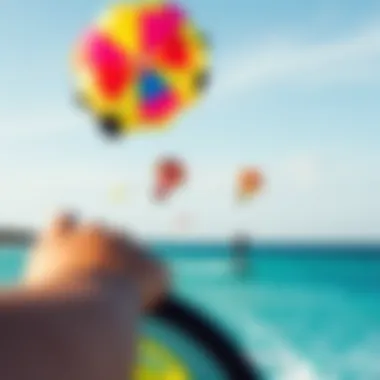
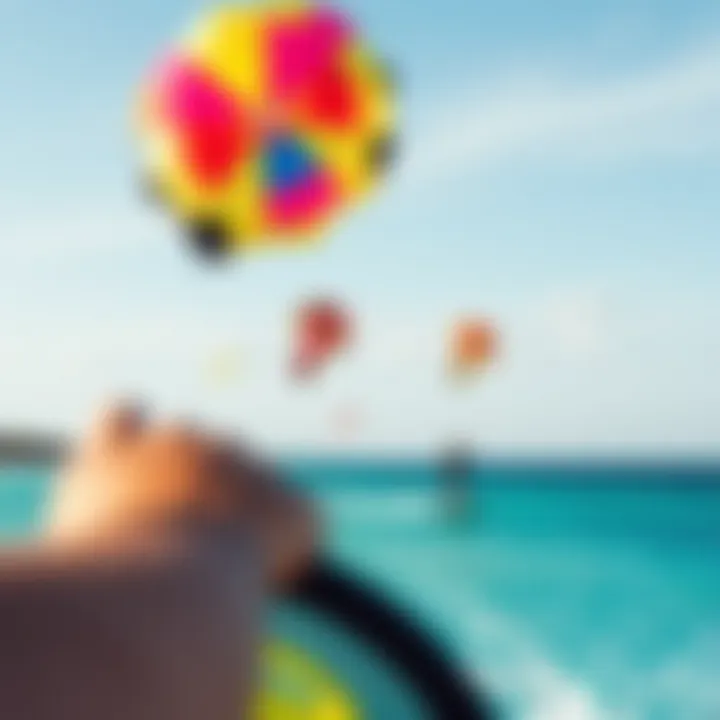
Intro
Kitesurfing is not just a thrilling water sport; it’s an exhilarating blend of wind, water, and a touch of skill. Miami Beach, with its sun-soaked shores and consistent breezes, makes for an ideal playground for both novices and experienced riders. So, as you gear up, it’s crucial to understand that learning to kite is much more than hopping on a board and blasting off into the waves. This guide digs into the essentials of kitesurfing lessons in Miami Beach, ensuring you get a good grip on the basics while allowing you to ride the waves high.
By examining key components like equipment selection, safety measures, and effective instructional techniques, you will be better prepared to choose the right lessons, instructors, and the gear that best suits your needs. Whether you’re a fresh-faced novice or a seasoned rider looking to amp up your skills, this guide unfolds layers of information tailored to your kitesurfing journey.
The Appeal of Kitesurfing in Miami Beach
Kitesurfing is not just an activity; it’s a way of life for many thrill-seekers flocking to the sandy shores of Miami Beach. The blend of wind, water, and skill creates an electrifying experience that attracts people from all walks of life. Imagine gliding over the turquoise waters, harnessed by the forces of nature. It’s invigorating, to say the least. But what makes this sport especially appealing in Miami Beach?
Understanding the Sport
Kitesurfing, at its core, combines elements of surfing, windsurfing, and paragliding. Participants ride on a board while being pulled by a large kite, offering that unique sensation of flying over the waves. There’s a steep learning curve, sure, but the adrenaline rush provided by mastering those first few rides is what keeps many enthusiasts coming back for more.
The sport isn't solely about the thrill. There’s a technical side that demands attention to detail and a willingness to adapt. Learning the wind patterns and understanding how to maneuver a kite efficiently can be challenging. Yet, it’s this very complexity that adds to the sport’s charm. Each session out on the water teaches something new, whether it’s refining a specific technique or developing better control over the kite.
Why Miami Beach?
Miami Beach stands out as a prime location for kitesurfing, and for good reason. Its warm climate and consistent winds create ideal conditions for both beginners and seasoned paddle boarders. The flat and shallow waters, particularly around the North Shore, provide safe areas to practice for those just getting their feet wet, quite literally.
Additionally, the vibrant local culture is a magnet for kitesurfers. Beaches packed with fellow enthusiasts foster a sense of community that makes the sport even more enjoyable. Many kitesurfing schools and shops dot the beach, offering lessons tailored to individual skill levels and personal goals. From friendly instruction to rental gear, everything is just a stone's throw away.
Moreover, Miami Beach offers various spots that cater to different skill levels. For instance, experienced riders may prefer the open ocean, where more substantial waves make tricks more thrilling. Meanwhile, beginners can stick to calmer areas where they can learn at their own pace.
The sunny weather and breathtaking ocean views complete the package. Whether it's a bright morning or a scintillating sunset, kitesurfing here is visually stunning. As one rides the waves, the backdrop of the Miami skyline enhances the experience, reminding participants just how fortunate they are to enjoy such exhilarating moments.
"To experience kitesurfing in Miami Beach is to know freedom—freedom in your spirit, wind in your face, and waves at your feet."
With these appealing aspects, kitesurfing in Miami Beach becomes more than just a sport; it's an adventure that beckons anyone daring enough to seize the kite and ride the wind.
Getting Started with Kitesurfing Lessons
Embarking on the journey of kitesurfing is akin to learning how to dance with the ocean. Miami Beach, with its vibrant waters and steady winds, serves as an ideal backdrop for anyone eager to dive into this exhilarating sport. In this context, getting started with kitesurfing lessons becomes paramount not only for safety but also for mastering the fundamentals that will shape your future riding experience. Whether you're a landlocked enthusiast or a seasoned water sports lover, quality instruction can transform your aspirations into a tangible skill set, enabling you to harness the elements effectively.
Choosing the Right Instructor
Experience and Credentials
Selecting an instructor with the right experience and credentials is one of the most pivotal aspects of your kitesurfing initiation. An instructor with a robust portfolio in kitesurfing not only imparts practical skills but also brings a wealth of knowledge about varying weather conditions, safety protocols, and gear recommendations. Look for instructors who are certified by recognized bodies, ensuring they adhere to industry standards. This certification acts as a beacon, confirming their credibility and commitment to teaching.
But it's not just about having a piece of paper to wave around. An instructor’s experience in the waters of Miami Beach can provide invaluable insights that someone from a less familiar terrain might miss. For instance, local instructors are likely aware of specific wind patterns and tides that can impact your training. This local expertise creates an optimal learning environment, enhancing both safety and enjoyment as you ride the waves.
"Choosing the right instructor can mean the difference between a memorable experience and a frustrating one. A knowledgeable guide makes all the difference."
Teaching Style and Compatibility
When it comes to teaching style, compatibility between student and instructor plays a vital role in the learning process. Not every method resonates with every student. An instructor’s ability to adapt their teaching style to fit your learning preferences can accelerate your progress. Some tutors prefer a structured approach, breaking down techniques into bite-sized lessons, while others might adopt a more free-form style, allowing students to learn through discovery.
Finding someone whose teaching style harmonizes with your approach to learning can significantly boost your confidence and comfort level on the water. It encourages a fluid exchange of communication, making it easier to ask questions and seek clarification. Moreover, a friendly demeanor helps in creating a relaxed learning environment, while a serious focus can instill the necessary discipline when it comes to safety and techniques.
Selecting Suitable Gear
Kites
The right kite can mean the world to your kitesurfing journey. Each kite is designed with specific wind conditions and rider skill levels in mind. As a beginner, a larger kite that offers more lift and easier control is generally recommended. This can help you gain confidence as you learn the ropes (or the lines, in this case). However, kites that are too large can be unwieldy in stronger winds, making it essential for your instructor to evaluate local conditions when recommending a size.
Additionally, kites come in various shapes and designs, from C-kites to delta kites. Each type serves different purposes and offers unique riding experiences. Understanding the differences can help you as you progress, transitioning into more advanced equipment when the time is right.
Boards
Kitesurfing boards also vary greatly in design, fundamentally influencing your performance on the water. For beginners, a wider board with more volume provides stability which makes it easier to get up and ride. As you gain experience, you might explore more performance-oriented boards that allow for tricks or faster speeds. This evolution in transition is essential for honing your skills and comfort level.
It’s worth noting that the board’s material can affect its durability and weight, which in turn plays a role in your overall experience. A heavier board is often more stable, while a lightweight board can add to your agility, allowing for quicker maneuvers.
Safety Equipment
Safety equipment shouldn't be an afterthought in your kitesurfing journey. Wearing a harness, impact vest, and helmet is non-negotiable, offering protection against potential falls and mishaps. These items enhance your comfort and can make a world of difference during your lessons.
A quality harness, for example, redistributes the force of the kite across your body rather than just your arms, allowing for a more enjoyable riding experience. Consider equipment that fits well—something too tight can restrict movement, while something too loose might shift unexpectedly, distracting you when you need to focus.
Additionally, being aware of safety protocols, such as proper gearing up and using quick release mechanisms, is essential to ensure safe practice, minimizing risks while you��’re out there on the waves.
Getting started with kitesurfing lessons in Miami Beach opens up a world of adventure. By making informed choices about instructors and gear, you set the stage for a rewarding journey that goes beyond just learning how to fly a kite on the water.
Lessons Structure and Progression
Understanding the structure of kitesurfing lessons is not just about following a routine; it’s about navigating the journey of learning in a logical and effective manner. This section sheds light on how these lessons are organized, offering insights into various stages of the learning process and the natural progression from beginner techniques to advanced maneuvers. A well-structured lesson plan not only provides clarity but also leverages skill development by progressively building on techniques already learned. This is especially vital in a sport like kitesurfing, where each new skill often lays the groundwork for the next.
Introductory Sessions


Theory and Safety
A cornerstone of any kitesurfing lesson lies in theory and safety training. At the beginning stages, a thorough understanding of theoretical concepts sets the tone for safe and effective practice on the water. Key aspects include learning about the wind, understanding equipment, and recognizing how to assess conditions for a good kitesurfing experience. This knowledge develops strong decision-making skills which are crucial for safety. Emphasizing safety not only protects the learner but also fosters responsible kitesurfing habits for the future.
Moreover, everyone is aware that the sea can be unpredictable. Recognizing potential hazards, like sudden wind gusts or shallow waters, becomes second nature with theory lessons. Being well-versed in the mechanics of kitesurfing not only builds confidence but can significantly reduce the learning curve. It’s a safety net, helping learners avoid common pitfalls right from the get-go.
Basic Techniques
Basic techniques are where the rubber meets the road. Learners need to grasp essential skills such as body positioning, kite control, and water starts. These foundational elements ensure that when they kiteboard, they do so with an awareness of control and safety. The better the basics are understood, the smoother the transition to more complex moves will be.
Unlike popular belief, mastering the basics is not simply learning to ride; it’s about developing an intuitive connection with the board and kite. A key characteristic of learning basic techniques is that they often contain repetitive practice, allowing muscle memory to form. As such, students might feel frustrated initially, but each attempt brings them closer to proficiency. Indeed, these early stages form a crucial framework for all future kitesurfing skills.
Intermediate to Advanced Training
Tricks and Maneuvers
Now things start getting exciting. Once comfortable with the basics, advancing to tricks and maneuvers is where personal style comes into play. Learners are introduced to jumps, spins, and other tricks that can add flair to their riding. The ability to perform these maneuvers can boost a rider's confidence and enhance their overall enjoyment of kitesurfing.
Students begin to experiment with these tricks, and it’s also where the instructors play a vital role in observing and offering feedback. Each trick often requires an understanding of timing, technique, and a willingness to fail. The unique feature here is that each trick is not just a goal but a learning opportunity; they teach resilience and the importance of adapting on the fly.
Conditioning and Endurance
Conditioning and endurance are often overlooked in the dialogue about kitesurfing. Yet, being fit translates into better performance on the water. Having a good level of physical fitness allows riders to handle the strenuous conditions inherent to the sport. As riders advance, conditioning becomes integral to longevity in the sport.
Specific exercises can improve muscle strength, flexibility, and stamina essential for kitesurfing. Riders may find themselves struggling to maintain control or facing fatigue after a short duration if fitness is not prioritized. Integrating a conditioning program enhances performance and keeps kitesurfing enjoyable, regardless of weather conditions. Additionally, as riders become more physically capable, they can push their limits further, leading to an upward spiral of skill acquisition.
Safety Considerations in Kitesurfing
In the realm of kitesurfing, safety is non-negotiable. Whether you're a beginner just trying your hand at riding the waves or a seasoned pro gunning for that next big trick, understanding safety considerations can mean the difference between a great day on the water and a potentially dangerous situation. Ensuring a sound grasp of safety protocols is crucial in equipping yourself with the necessary skills to navigate the winds and waves safely.
The elements of kitesurfing, such as wind conditions and water hazards, demand to be approached with caution. This comprehensive guide aims to shed light on the pivotal aspects of safety, from understanding local conditions to adhering to proper equipment protocols. Being well-informed empowers individuals to make safer choices, thereby enhancing their overall experience in this thrilling sport.
Understanding Local Conditions
Wind Patterns
Wind is the lifeblood of kitesurfing. Without it, you're just a person holding a kite on a board looking a bit foolish. Understanding wind patterns is vital not only for choosing the right time to kite but also for predicting how the conditions will change throughout the day. In Miami Beach, winds typically blow from the east, providing consistent and reliable kiting conditions.
However, it's crucial to pay attention to variations in wind speed and direction. Variable winds can lead to sudden gusts, catching inexperienced riders off guard. A good rule of thumb is to be mindful of local forecasts, but also to observe conditions on the water firsthand. The streamlined challenge of adapting to real-time wind characteristics can prove beneficial for honing your skills.
- Key Characteristics: Reliability and variability.
- Benefits: Informed riders can strategize their kiting sessions better.
- Unique Features: The combination of seabreeze in the afternoons offers a great mix of power for kitesurfers but may mean different safety precautions.
Tidal Effects
Tides play a crucial role in kitesurfing. Understanding how they work can significantly affect your overall experience and safety while riding. In Miami Beach, the tides can drastically alter the water depth and currents, creating both opportunities and challenges. For a beginner, shallow water might seem inviting, but it can also hide potential hazards like rocks or sandbars.
Debating over high tide versus low tide is essential. While riding during high tide may offer smoother conditions, low tide can expose hazards that one would normally glide over in deeper waters. Besides that, currents during certain tides can be aggressive and can easily sweep a rider away from the designated kiting area.
- Key Characteristics: Tidal cycles that alter conditions significantly.
- Benefits: Knowing tides allows for safer riding periods.
- Unique Features: Low tide might reveal unfamiliar structures that could pose risks if not checked beforehand.
Equipment Safety Protocols
Pre-Flight Checks
Before taking on the waves, pre-flight checks are essential for ensuring safety. Think of them as your last line of defense. Inspecting your equipment's condition, including lines, kite, and board, can prevent mishaps that lead to injuries or gear malfunctions. This routine may seem tedious, but it can ultimately save you from a sticky situation later.
In Miami Beach, the combination of saltwater and sand can wear out equipment quicker than expected. Regularly checking for frayed lines or damaged kites ensures you stay airborne instead of crashing down hard. Always ask yourself: "Is the gear ready to handle today’s conditions?" Having this checklist ingrained in your routine adds a layer of security to your sessions.
- Key Characteristic: Comprehensive gear assessment pre-ride.
- Benefits: Reduces risks of accidents caused by gear malfunction.
- Unique Features: Clearer equipment awareness boosts rider confidence.
Emergency Procedures
Despite all precautions, sometimes situations go awry. This is where having an emergency strategy is invaluable. Understanding how to react in various emergency scenarios could mean the difference between a minor hiccup and a serious incident. Knowing how to signal for help, identifying safe spots for landing, and mastering self-rescue techniques are fundamental skills for any kitesurfer.
In Miami Beach, heavy traffic can catch riders unawares, so a well-mapped emergency plan can save lives. It’s advisable to familiarize oneself with the specific dangers of each location—whether it be rip currents or marine life. Furthermore, making friends with fellow riders can create a network of support during unforeseen events.
- Key Characteristic: Awareness of emergency responses and local conditions.
- Benefits: Preparedness increases safety and confidence on the water.
- Unique Features: Community support and awareness can enhance the response during an emergency.
Being proactive with safety can make the exhilarating experience of kitesurfing even more enjoyable. Don't skimp on precautions; they’re just as integral to your adventure as the wind itself.
Choosing Prime Locations for Kitesurfing
Selecting the right location for kitesurfing is of utmost importance for both beginners and seasoned riders. The ideal spot not only enhances the learning experience but also plays a critical role in safety and skill development. In Miami Beach, where the allure of the water beckons, the terrain and wind conditions can significantly influence your success on the board. This section dives into the best beaches and some hidden treasures that collectively make the region a prime spot for kitesurfing adventures.
Best Beaches in Miami Beach
Conditions and Accessibility
When talking about conditions and accessibility, it’s crucial to understand how the beach environment affects your kitesurfing journey. Conditions refer to the wind strength, wave size, and current, while accessibility covers how easy it is to reach these places. Miami Beach is blessed with a variety of beaches that cater to both beginners and experienced kitesurfers.
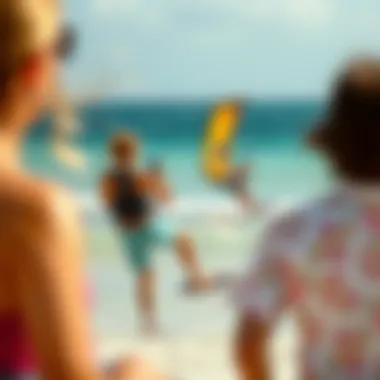

For instance, South Beach is often preferred for its consistent winds and ample space, but it tends to be crowded due to its popularity. Conversely, 5th Street Beach offers better accessibility with a wide shore and a manageable number of kitesurfers, making it a great option for those looking to learn. The unique aspect of these locations is that the availability of rental shops and instructors close by means you get geared up and hit the water practically in a heartbeat. However, parking can sometimes be a hassle, so it’s wise to plan ahead to make the most of your time.
Crowd Management
Crowd management ties closely with conditions and accessibility but focuses more on ensuring a safe and enjoyable experience while you practice. The beaches in Miami can become packed during peak times, which can lead to dangers if not carefully navigated. Choosing a less popular beach or opting for morning hours can help avoid densely populated areas.
A key feature of crowd management is awareness of other riders while kitesurfing. At places such as Hobie Beach or Virginia Key, you’ll find a more laid-back environment, which allows for less chance of collisions and more space for practicing tricks. This can be particularly beneficial for those learning new skills as it minimizes distractions. On the flip side, there are still risks involved, and newcomers need to remain vigilant to ensure safety for themselves and fellow riders.
Hidden Gems
Moving beyond the mainstays of Miami Beach, there are lesser-known spots that offer not just beauty but also unique experiences for kitesurfing enthusiasts.
Lesser-Known Spots
The term "lesser-known spots" conjures up images of pristine shorelines and untouched waters, which perfectly describes places like Matheson Hammock Park. These hidden gems may not have the same high-profile reputation as South Beach, but they provide secluded areas where kitesurfers can practice in peace.
The unique feature here is the lagoon that creates a controlled environment for beginners. Here, kiteboarders can get a grip on the basics without the tumult of high waves or strong currents. For those seeking a tranquil atmosphere away from the crowds, these lesser-known beaches not only serve as an escape but also provide a safe space to learn and improve. However, as these spots might lack amenities such as rental shops, it’s best to come prepared.
Nature Reserves
Lastly, nature reserves near the beach offer not just stunning views but also a commitment to preserving natural habitats. Locations like the Bill Baggs Cape Florida State Park provide a unique kitesurfing experience in a picturesque setting. These reserves usually have strict guidelines in place, ensuring that while you enjoy kitesurfing, the surrounding environment is well cared for.
Adventurers will appreciate the serenity and beauty that such places offer while skimming over clear waters. A downside could be limited access during certain times to avoid disrupting wildlife, but the trade-off is well worth it. Nature reserves allow kitesurfers to commune with both the winds and nature, making the experience truly memorable.
Choosing the right kitesurfing location goes beyond just finding a good wave. It’s about ensuring safety, accessibility, and an enjoyable environment where one can either learn or hone skills.
In summary, whether you’re drawn to the rhythmic allure of the popular beaches or the quiet beauty of hidden gems, each location has something unique to offer. The important thing is to choose a space that aligns with your skill level and allows for safe and fulfilling riding.
Exploring Kitesurfing Culture
Kitesurfing isn't just about riding the waves; it's a culture that thrives on community, shared experiences, and environmental responsibility. This section aims to highlight how immersing oneself in kitesurfing culture can elevate the overall experience of the sport in Miami Beach. Being part of a lively and passionate community can not only enhance your skills through shared knowledge but also foster a sense of belonging among individuals who embrace the thrill of the wind and water together.
Connecting with the Community
Local Events and Competitions
Local events and competitions play a pivotal role in the kitesurfing culture in Miami Beach. These gatherings are not merely about showcasing talent; they serve as a melting pot for enthusiasts of all skill levels to connect and share in the excitement of the sport.
One key characteristic of these events is their inclusive nature. From friendly contests aimed at beginners to serious competitions drawing seasoned pros, there's something for everyone. These competitions often feature categories that cater to different styles and skillsets, making it an approachable platform for newcomers.
A unique feature of local events is the camaraderie they inspire. Kitesurfers, whether they win or lose, come together to celebrate each other's achievements, fostering a collective atmosphere of encouragement. This sense of community is not just beneficial; it also provides newcomers with invaluable mentorship opportunities and insights into more advanced techniques.
However, there's also the downside to consider. The atmosphere can get quite competitive, which may intimidate some novices. It's important for newcomers to remember that each event serves as a learning opportunity more than a test of skill.
Online Forums and Groups
Online forums and groups are increasingly becoming integral to the kitesurfing culture, allowing enthusiasts to connect beyond Miami Beach’s shores. These digital platforms serve as a treasure trove of information, providing a space for dialogue on everything from riding tips to gear recommendations.
A hallmark of these online communities is their accessibility. Regardless of where you are, a quick search can connect you to passionate kitesurfers eager to share their knowledge and experiences. The advantage of gaining insights from diverse perspectives—ranging from beginners to experts—cannot be overstated. You'll find discussions that address local conditions, gear concerns, and personal anecdotes that can truly enhance your understanding of the sport.
Yet, some might argue that online forums can become overwhelming. The sheer volume of information can lead to confusion, especially for those just starting. It’s wise to approach this knowledge pool with discernment—engaging with reputable sources and avoiding misinformation.
Environmental Considerations
As the kitesurfing community continues to flourish, environmental considerations become paramount. The sport’s connection to nature makes it essential for riders to be mindful of their impact on the surrounding ecosystem.
Sustainable Practices
Sustainable practices within the kitesurfing community are critical for the preservation of Miami Beach’s natural beauty and resources. In recent years, there's been a growing awareness of the impact that sports activities can have on local environments.
One significant aspect of sustainable practices in kitesurfing is adhering to natural regulations. This is about respecting local wildlife, maintaining clean beaches, and reducing pollution generated by equipment. Engaging in beach clean-ups not only helps the environment but also strengthens community ties.
A unique feature of these practices is their dual benefit: protecting nature while enhancing the overall experience. A pristine environment enriches the kitesurfing experience, making it more enjoyable and rewarding. On the flip side, failing to adopt sustainable practices can lead to adverse outcomes that mar the sport.
Preserving Natural Habitats
Preserving natural habitats is perhaps one of the most critical considerations tied to kitesurfing culture. As more enthusiasts flock to Miami Beach, the need to protect fragile ecosystems has never been more pressing. Events that promote habitat preservation highlight the importance of keeping beaches and surrounding waters free from pollutants and disruptions.
The key characteristic of initiatives aimed at preserving these natural areas is collaboration. Local governments, environmental groups, and kitesurfing enthusiasts often unite to advocate for protective measures, ensuring that the sport can flourish without causing harm to nature. This collective effort serves as a testament to how the kitesurfing community values its environmental footprint.
However, the challenge remains. Balancing the growth of the kitesurfing culture with conservation efforts can be a tricky path to navigate. It's critical for riders to remain educated on environmental impacts and actively participate in preservation initiatives.
Investing in Your Kitesurfing Journey
Investing in your kitesurfing journey is not just about diving headfirst into the waves and feeling the rush of the wind. It's a multifaceted decision that encompasses various aspects including budgeting for lessons, suitable gear, and insurance. As a potential kitesurfer, considering how much you’ll spend and what you'll get in return can make or break your experience, shaping your journey into one that's enriching and fulfilling.
Engaging in this sport offers benefits that are manifold—physical fitness, mental clarity, and not to forget, the sheer fun of harnessing the wind. However, to reap these rewards, it is paramount to understand that a well-planned investment can lead to significant returns, both in terms of enjoyment and skill enhancement.
Budgeting for Lessons and Gear
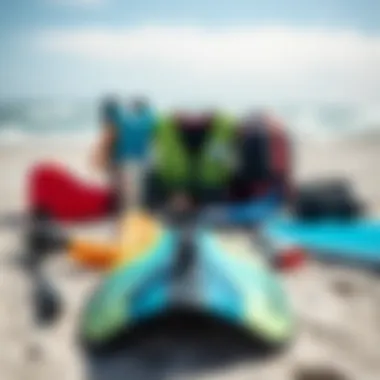
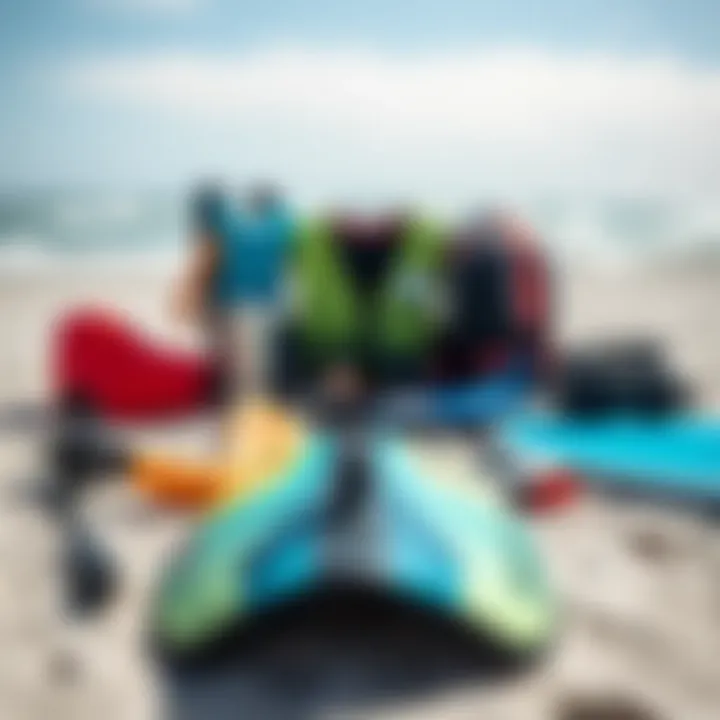
Comparative Costs
When it comes to comparative costs in kitesurfing, potential riders often find themselves faced with a plethora of options. Knowing the various price points for lessons and equipment can help you make informed choices. For instance, instructional costs range significantly depending on location, instructor experience, and lesson duration. Generally, the average cost of an introductory lesson in Miami fluctuates between $100 to $200 for a couple of hours.
Key characteristic: This broad price range reflects the diversity of offerings available, from group lessons to private instructions.
Unique feature: By understanding these costs, you can budget better while still getting quality instruction. One decision you’ll face is whether to opt for a package of lessons at a discount or pay per session. It’s worth noting that packages typically save money in the long run. However, committing to multiple lessons upfront might be intimidating for beginners who aren’t yet sure if this sport resonates with them.
Long-Term Investment
Long-term investment in kitesurfing often implies not just spending on lessons, but the durability of the gear you choose. Quality kites and boards can set you back anywhere from $800 to $2,500. While the initial costs may seem steep, think of it as an investment in your enjoyment and skill development.
Key characteristic: High-quality gear tends to last longer and perform better, enabling you to progress more swiftly.
Unique feature: Opting for better equipment can prevent frequent replacements, as sub-standard gear often leads to more wear and tear. While it’s tempting to go for cheaper options, in this sport, you truly get what you pay for, and investing smartly can reduce future costs.
Exploring Insurance Options
Personal Coverage
In kitesurfing, personal coverage is a crucial component that often gets overlooked. Think of it this way: amidst the thrill of riding the waves, the last thing you want is to be blindsided by unforeseen medical expenses due to an injury. Personal accident insurance could shield you from the financial burden by covering hospital bills and rehabilitation costs.
Key characteristic: This type of coverage often extends to various sports activities, giving you peace of mind while you chase that adrenaline rush.
Unique feature: While you may not feel it’s necessary, having it can provide security, especially for new kitesurfers who are still mastering the fundamentals. It’s better to have a safeguard in place before any mishaps occur.
Equipment Insurance
Equipment insurance is another major consideration when investing in kitesurfing. Imagine a situation where your kite gets damaged due to a freak wave or a mishap with another rider; without equipment insurance, footing the replacement costs could be a financial blow.
Key characteristic: Insurance specifically for kiting gear often includes coverage for theft and accidental damage, a sound safety net for any enthusiastic rider.
Unique feature: This type of insurance not only mitigates the risks but allows you to enjoy the sport without the constant worry of potential losses. Investing a bit extra for peace of mind is often worth it when the stakes are high.
Just like you wouldn’t ride a bicycle without a helmet, don’t hit the waves without the proper safety nets in place.
In sum, investing wisely in your kitesurfing journey covers budgeting for lessons and gear, and exploring insurance options. Taking these considerations seriously not only elevates your experience but also ensures that you can enjoy kitesurfing to its fullest without undue stress. A well-rounded approach to investing allows kiteboarders to focus on what truly matters: riding the wind and waves.
Evolving as a Kitesurfer
As kitesurfing continues to gain traction, particularly in hotspots like Miami Beach, the journey of a kitesurfer is not merely about catching waves and enjoying the sun. It involves continuous growth and skill enhancement. Evolving as a kitesurfer means adopting a mindset that embraces learning and adapting to new challenges. This section dives into the essential aspects that can help you not just ride the waves, but dominate them. By tracking your progress and staying abreast of new trends and innovations in gear and destinations, you can make the most of your kitesurfing adventure.
Tracking Progress
Setting Goals
Setting goals is vital for any kitesurfer who wishes to improve over time. It's not solely about flying high; it’s about having clear objectives to give direction to your practice. Each goal, whether it's mastering a new trick or increasing your time on the water, provides you with motivation. A key characteristic of goal-setting in kitesurfing is that it allows for incremental growth. Rather than overwhelming yourself with the aspiration to become an expert overnight, you break down your progress into manageable bites.
By emphasizing smaller, achievable milestones, you can celebrate your successes more frequently, fostering a sense of accomplishment. Unique to this approach is that it acts not only as a roadmap but also as a form of personal accountability. However, missing a target can be disheartening if perceived unfavorably; recognizing this, the setting process must involve flexibility, allowing for adjustments based on circumstances.
Reflection and Adaptation
Reflection and adaptation form the backbone of personal development in kitesurfing. After every session on the water, taking a moment to evaluate what went well and what didn’t can transform your approach to learning. This practice encourages a thoughtful assessment and promotes growth. A unique aspect of this is that it builds resilience. Understanding failures not as endpoints but as stepping stones can change one’s mindset.
The ability to adapt your techniques based on feedback and observation can lead to quick improvements. Additionally, this practice cultivates self-awareness, helping you identify what aspects may be holding you back. Keep in mind, though, that constant self-critique can lead to frustration without proper balance. Finding peace in the process of adaptation is essential.
Staying Updated with Trends
New Gear Innovations
In the fast-evolving world of kitesurfing, staying updated with new gear innovations can significantly enhance your performance. The industry is constantly pushing the envelope, and incorporating new technology and materials can make a noticeable difference. Trends such as lighter kites, innovative boards, and improved safety gear are just a few examples. A hallmark of embracing these innovations lies not only in the excitement of using cutting-edge equipment but in unlocking your full potential on the water.
However, switching to the newest gear can come with a hefty price tag. Therefore, it’s crucial to weigh the benefits against your current skill level and needs. Carefully considering whether a new kite or board aligns with your objectives will help you make informed decisions rather than simple impulsive choices.
Travel Destinations
Travel destinations play a pivotal role in enhancing your kitesurfing experience. Exploring new waters can expose you to different conditions that sharpen your skills. From Miami Beach to less-trodden locales, the possibilities are numerous. Each new location not only offers fresh challenges but also the opportunity to engage with diverse kitesurfing communities. An interesting feature of varying locations is that each can teach you something new about your craft—whether it be navigating stronger winds or understanding different tide patterns.
Yet, the pursuit of unforgettable travel experiences can often lead to logistical challenges, such as travel expenses or navigating unfamiliar regulations. Balancing the thrill of exploration with practical considerations is necessary for optimizing your kitesurfing journey.
The evolution of a kitesurfer is layered and multifaceted, embracing skill development, reflection, and exploration of both gear and destinations.
The End: Pursuing Excellence in Kitesurfing
As we wrap up this guide, it’s essential to underscore that excelling in kitesurfing is a journey, not just a destination. Navigating this thrilling sport requires dedication and a willingness to continually learn and adapt. To truly elevate your kitesurfing experience in Miami Beach, a blend of technical skills, safety awareness, and community involvement is key.
Key Elements to Focus On
- Continuous Learning
Learning never truly stops; from mastering basic maneuvers to trying out new tricks, every session offers an opportunity for growth. Setting goals can help track how far you’ve come and identify areas that need improvement. Whether you’re struggling with balance or looking to enhance your jumping techniques, practice makes perfect. - Engagement with Community
Connect with fellow kitesurfers in the vibrant Miami Beach community. Share tips and experiences and participate in local events and competitions. Engaging with others can expose you to new techniques and perspectives. Plus, being part of a community fosters friendships that make your journey even more rewarding. - Adapting to Conditions
Each day on the water presents different wind and water conditions. Understanding how these factors affect your ride will improve your performance. Pay attention to local weather patterns and be ready to adjust your techniques accordingly. This adaptability will set you apart from novice riders. - Safety First
Always prioritize safety. Knowing how to properly check your equipment and respond to emergencies might not seem like a skill, but it’s critical for a long and enjoyable kitesurfing journey. Accidents can happen, but being prepared often mitigates risks. - Investing in Quality Gear
While it might be tempting to go for the cheapest options, quality gear impacts performance significantly. Invest in reliable kites and boards that suit your skill level. Regular maintenance also plays a vital role in ensuring your equipment remains safe and effective.
The Path Ahead
Becoming an exceptional kitesurfer entails commitment, resilience, and curiosity. Seek instructors who share your passion and learn from their expertise, while also developing your own style. Subscribe to forums and platforms that discuss new trends and equipment, such as Reddit, where you can glean insights from seasoned riders.
Ultimately, the pursuit of excellence in kitesurfing not only enhances your skills but also enriches your overall experience. Embrace the thrill of the ride, celebrate your progress, and stay curious about what lies ahead. Whether you’re carving through the waves or flying high above the water, every kitesurfing session is an opportunity to grow.















